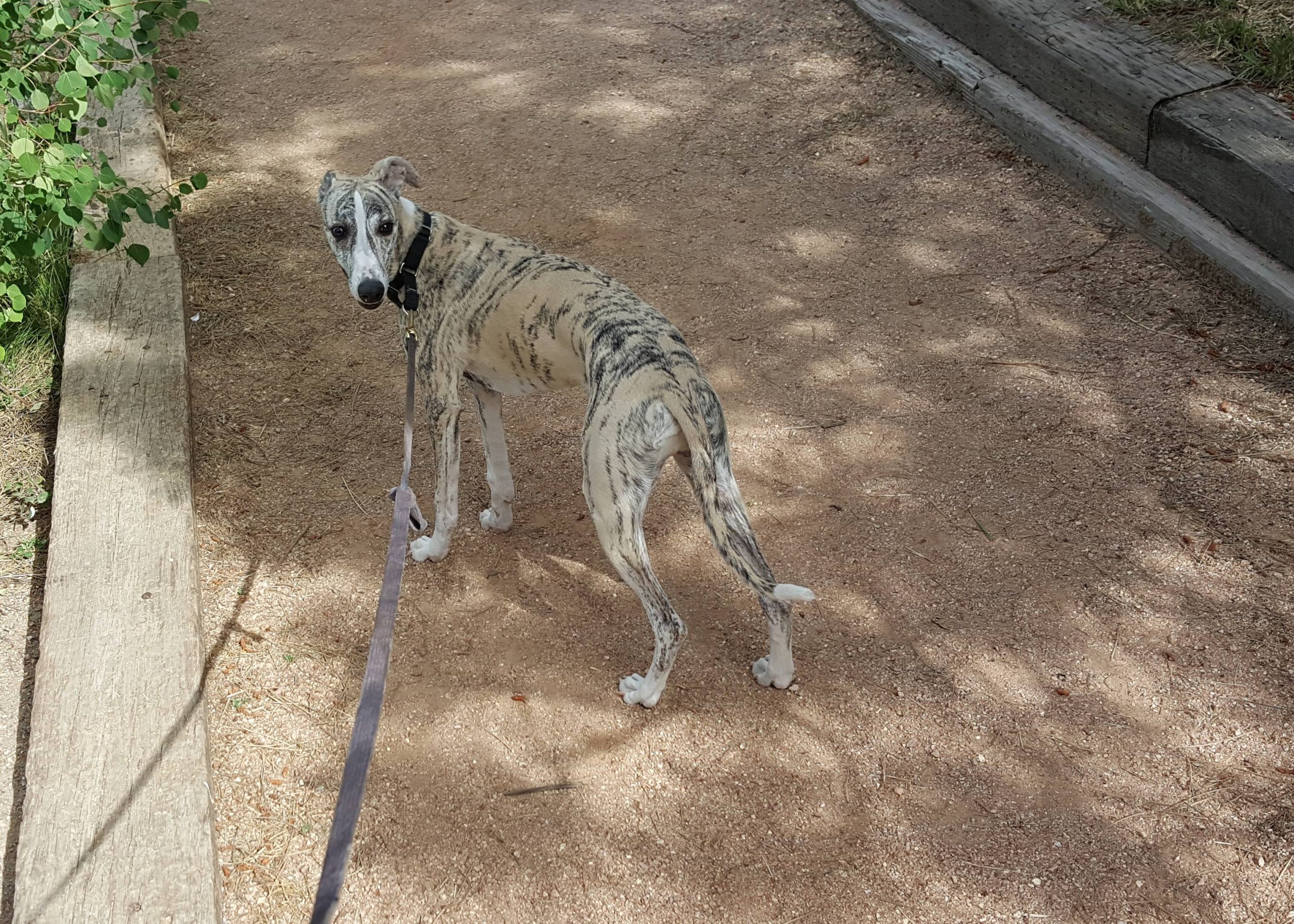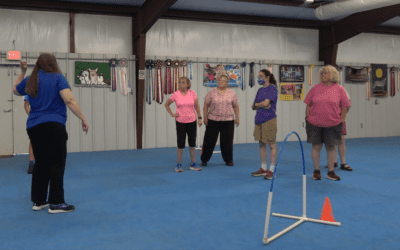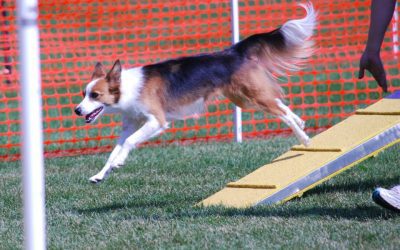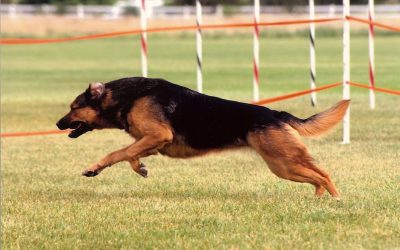Written by Lorrie Reynolds
Categories
One of the students who attended a seminar was telling me about her efforts to train more distance. She said that she’d been having some problems, and then, when her dog finally, FINALLY nailed the sequence of jumps 25’ away, he knocked a bar, so she couldn’t reward.
As we talked, I asked her one simple question. “Have you ever thought of setting the bars lower while you are focusing on distance?”
It took her a few seconds to process. “Well, no!” she said. Then she laughed. Such a simple solution to a frustrating problem, but most people never think about it.
In all of my agility seminars, we use hoops, set the bars to the lowest height, or we use jumps with no bars at all. My seminars aren’t about teaching dogs how to jump, they are about teaching the team to communicate and the dog to respond to cues so that they can achieve the distance they want.
Doing things like using 6 weaves instead of 12 and eliminating the chance of knocking a bar lets the team focus on what we are actually trying to accomplish.
That leads us to the next tip.

Training Tip #2 for Agility and Tricks
When you’re focusing on teaching your dog a new skill, lower the criteria for things that the dog already knows. For example, if you are focusing on distance training, lower the jump bars and make the sequences easier or remove any off-course temptations. That way, you have a higher chance of being able to reward the new skill.

For more information on criteria, see the article Determine and Plan Performance Criteria Before Training.
Trick trainers, if you are teaching a complex trick and your dog already knows how to drop an object in a bucket, for example, make the bucket bigger while you are teaching the new piece.
You Might Also Like…
Five Ways to Crush It at Your Next Dog Agility Seminar
Going to a dog agility training seminar? Check out these five tips to maximize your return on investment!
Read This Before Deciding on Your Agility Dog’s Contact Performance
Which contact performance, running or stopped, is right for your team? The answer might surprise you.
Is Your Agility Dog a Pinto or a Ferrari?
If you’ve moved up from a slow or moderately-fast agility dog to a speed racer, here’s some advice to make your life easier.
Get tips, stories, discounts, and early notification of events and new courses delivered straight to your inbox! Join the community!




0 Comments